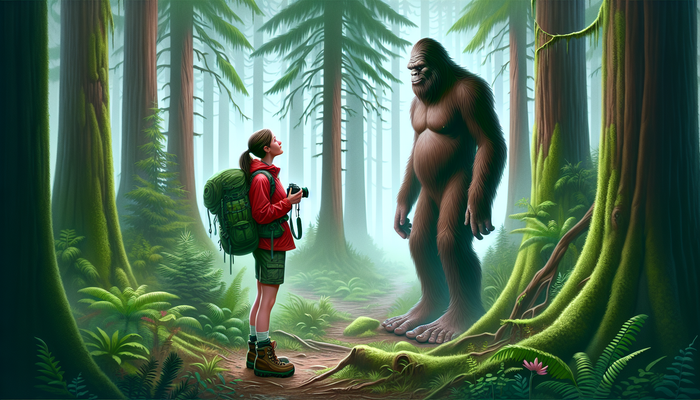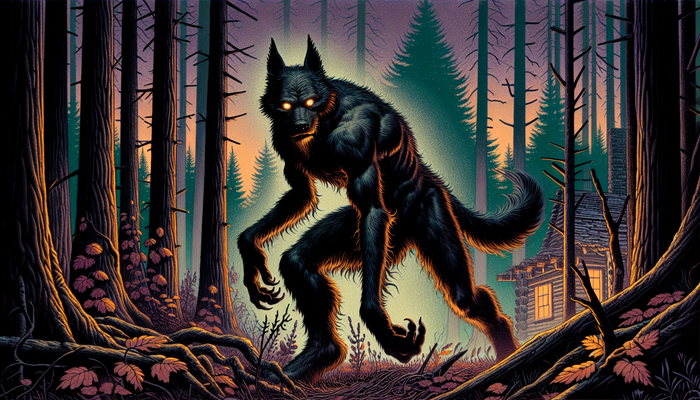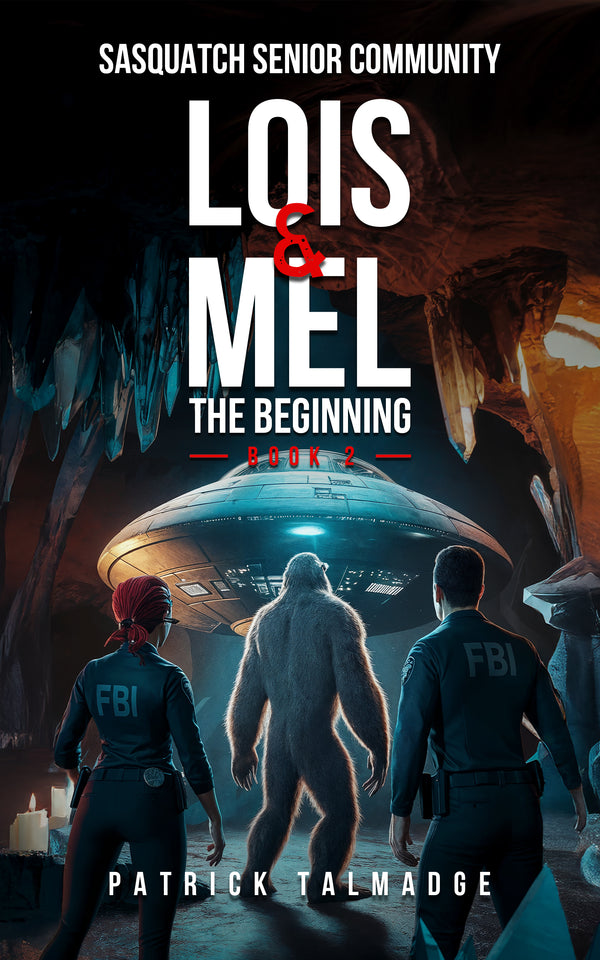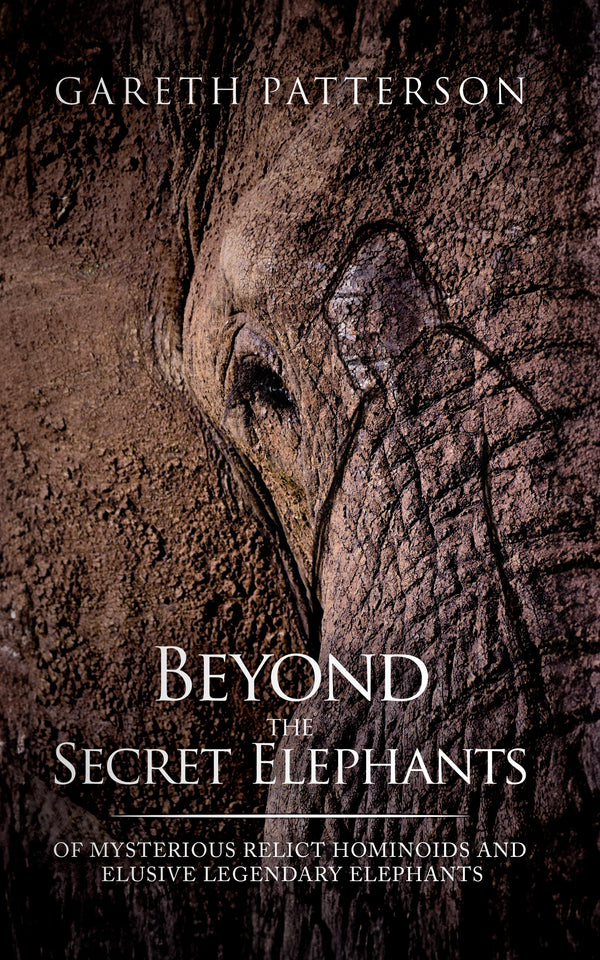Legendary Arkansas Cryptids
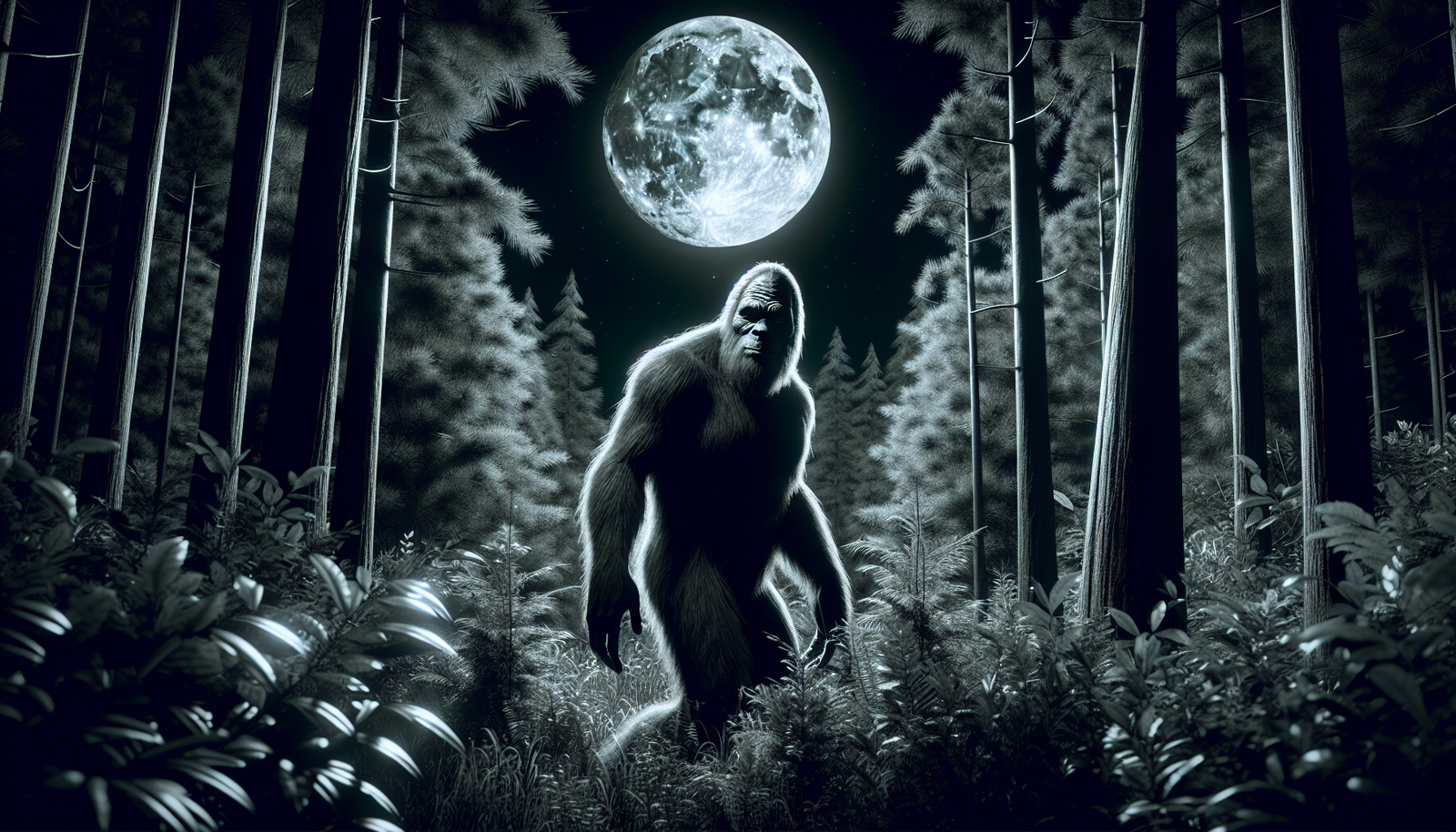
By Wade Beaumont, Cryptozoologist and Park Ranger
There's something about the untamed wilderness that calls to the adventurer in all of us. Maybe it's the promise of the unknown, the thrill of discovery, or the primal connection to our wilder roots. Whatever it is, I've always felt that pull, especially when it comes to the mysterious creatures that are said to lurk in the shadows of our world. And let me tell you, folks, there's no place quite like Arkansas when it comes to cryptid country.
They call it the Natural State for a reason. With its sprawling forests, winding rivers, rugged mountains, and deep caves, Arkansas is a land that seems tailor-made for creatures that defy explanation. It's a place where legends take root and grow as tall as the pines, where every rustle in the brush could be a bear, a buck, or something far stranger.
As a born and bred Texan with a lifelong passion for cryptozoology, I've always had a special fascination with the monsters of Arkansas lore. From the infamous Fouke Monster to the elusive White River beast known as Whitey, from the howling terror of the Ozark hills to the phantom stag of the Ouachitas, these cryptids have captured the imaginations of Arkansans for generations. And for good reason - they're not just spooky campfire tales, but living legends that are deeply intertwined with the history, culture, and identity of the state.
In this article, we're going to take a deep dive into the wild world of Arkansas cryptids. We'll explore the origins and evolution of these enduring legends, examine the evidence (or lack thereof) behind the sightings, and ponder what these tales of the strange and unknown reveal about our relationship with the natural world. So sit back, grab a cold one, and join me on a journey into the shadowlands of the Natural State, as we attempt to unmask the beasts that have haunted and enthralled Arkansans for generations.
THE FOUKE MONSTER: BIGFOOT OF THE BOTTOMLANDS
Let's start with the granddaddy of all Arkansas cryptids - the one and only Fouke Monster. This shaggy, stinky, swamp-dwelling sasquatch has been stomping around the bottomlands of Miller County in southwestern Arkansas for decades, if not centuries.
The Fouke Monster, sometimes called the Southern Sasquatch or the Boggy Creek Beast, is typically described as a large, bipedal creature covered in dark hair, standing anywhere from 7 to 10 feet tall and weighing up to 800 pounds. It's said to have a conical head, broad shoulders, long arms, and a loping, ape-like gait. Oh, and did I mention the smell? By all accounts, this thing reeks to high heaven, with a stench that's been compared to a skunk, wet dog, or rotting flesh.
The Fouke Monster first came to national attention in the early 1970s, thanks to a series of highly publicized encounters near the town of Fouke. The most famous of these was the Ford family incident in May of 1971, when the creature allegedly attacked the rural home of Bobby and Elizabeth Ford late one night.
According to the Fords, the beast reached through a screen window while Elizabeth was sleeping on the couch, before being chased off by Bobby and his brother Don. The men claimed to have shot at the creature several times as it fled into the woods, but no blood or body was ever found. However, investigators did discover strange, three-toed footprints and scratch marks around the Ford property, adding to the aura of mystery surrounding the case.
The Ford incident sparked a media frenzy and a surge of Fouke Monster mania that swept through the region. Monster hunters, curiosity seekers, and reporters from around the country descended on the tiny town, all hoping to catch a glimpse of the elusive beast. The hype reached a fever pitch with the release of the 1972 docudrama The Legend of Boggy Creek, which dramatized the Ford encounter and other local monster sightings.
The low-budget film, directed by Texarkana native Charles B. Pierce, was a surprise hit, grossing over $20 million at the box office and cementing the Fouke Monster's place in cryptid lore. Shot on location in Fouke and the surrounding swamps, and starring many local residents as themselves, the movie captured the eerie atmosphere and rural charm of the region, while also tapping into the primal fear and fascination that the legend of the Fouke Monster evoked.
In the wake of the film's success, Fouke fully embraced its newfound notoriety as a cryptid capital. The town began hosting an annual Fouke Monster Festival, complete with vendor booths, live music, guest speakers, and even a Fouke Monster Lookalike Contest. Visitors can also check out the Monster Mart, a combination gas station, convenience store, and Fouke Monster museum that features newspaper clippings, movie memorabilia, and alleged monster footprint casts.
But perhaps the most surprising testament to the Fouke Monster's enduring impact on the region is the fact that there is an actual Fouke Monster Refuge, established by the Arkansas Game and Fish Commission in 1973. The refuge, which encompasses a portion of the Sulphur River bottoms where many of the sightings occurred, makes it illegal to harm or harass the creature within its boundaries. Now, I'm not sure how they'd enforce that, given that the monster's existence hasn't exactly been proven, but it's a heck of a statement about how seriously some folks take this legend.
So what are we to make of the Fouke Monster? Is it a genuine undiscovered species, a relic hominid that has managed to survive in the remote swamps of the South? Is it a case of mistaken identity, with sightings actually being of bears, feral hogs, or other known animals? Or is the whole thing an elaborate hoax, a bit of rural legend tripping that took on a life of its own?
The truth is, we may never know for sure. The evidence for the Fouke Monster's existence is largely anecdotal, based on eyewitness accounts and circumstantial findings like footprints and scratch marks. No clear photographs or videos of the creature have emerged, and no physical remains have been recovered. Skeptics point out that the Fouke Monster legend really took off after The Legend of Boggy Creek was released, suggesting that the film influenced people's perceptions and memories of strange encounters in the area.
On the other hand, believers argue that sightings of the creature predate the Ford incident and the movie by decades, with reports stretching back to the 1940s and even earlier. Some researchers have suggested that the Fouke Monster could be a surviving population of Gigantopithecus, a giant ape that roamed Asia during the Pleistocene epoch, or perhaps a relict species of hominid that migrated to North America via the Bering Land Bridge during the last Ice Age.
Personally, I try to keep an open mind about these things. I've spent enough time in the woods to know that there are plenty of critters out there that have yet to be catalogued by science, and I've heard enough stories from credible, level-headed folks to believe that something strange is afoot in the bottomlands of Arkansas. At the same time, I'm well aware of the power of suggestion, the fallibility of human memory, and the tendency for tall tales to grow taller with each telling.
But whether the Fouke Monster is flesh and blood or pure folklore, there's no denying the creature's power as a cultural icon and a symbol of the untamed wildness that still exists in the Natural State. For the people of Fouke and the surrounding region, the monster is more than just a spooky story - it's a living legend, a reminder of the mysteries that lurk in the swamps and forests of their homeland. And for those of us who are drawn to the unknown, the Fouke Monster is an invitation to explore the shadows and to keep searching for the truth that lies beyond the edges of the map.
WHITEY: THE WHITE RIVER'S AQUATIC ENIGMA
If the Fouke Monster is Arkansas's answer to Bigfoot, then the White River Monster is its very own Loch Ness leviathan. For over a century, tales have circulated about a massive, serpentine creature lurking in the murky depths of the White River in northeastern Arkansas. Known affectionately as "Whitey" to locals, this aquatic cryptid has been described as everything from a giant catfish to a prehistoric reptile to a water-dwelling dinosaur.
The earliest recorded sightings of the White River Monster date back to the late 19th century, when riverboat pilots and fishermen began reporting strange disturbances in the water and glimpses of an enormous, unidentified creature. But it wasn't until the summer of 1937 that Whitey truly entered the public consciousness, thanks to a widely publicized encounter by a local plantation owner named Bramlett Bateman.
According to Bateman, he was out on the river near the town of Newport when he spotted a massive, grayish-white creature swimming in the water. He described it as being "as wide as a car and three cars long," with a head like a catfish and a long, serpentine body. Bateman's story made national headlines, with newspapers dubbing the creature "The Newport Sea Monster" and speculating about its origins and identity.
In the decades that followed, sporadic sightings of Whitey continued to trickle in from along the White River and its tributaries. Eyewitnesses described a creature that was anywhere from 12 to 30 feet long, with smooth, elephant-like skin, a spiny dorsal ridge, and a horn or antler-like protrusion on its head. Some even claimed to have seen the monster crawl out onto land, leaving behind three-toed tracks in the mud.
Interest in the White River Monster reached a fever pitch in the early 1970s, when a rash of sightings near the town of Newport sparked a renewed media frenzy. Locals dubbed the creature "Whitey" and began flocking to the river in hopes of catching a glimpse of the beast. Souvenir shops started selling White River Monster t-shirts, postcards, and even "Monsterburgers," while the town of Newport hosted a "Monster Sidewalk Sale" to capitalize on the hype.
The mania reached its peak in 1973, when the Arkansas legislature passed a resolution creating the White River Monster Refuge along a 20-mile stretch of the river near Newport. The resolution made it illegal to "molest, kill, trample, or harm" the creature within the refuge's boundaries, and even called for the construction of a White River Monster monument to attract tourists to the area.
But just as quickly as it had begun, the White River Monster craze began to fade. Sightings of the creature became less frequent, and media attention shifted to other cryptid hotspots like Loch Ness and Lake Champlain. Today, Whitey is largely remembered as a quirky piece of Arkansas folklore, a river monster that briefly captured the nation's imagination before slipping back into obscurity.
So what exactly was the White River Monster? Theories abound, ranging from the plausible to the downright bizarre. Some researchers have suggested that Whitey could have been a misidentified known animal, such as an abnormally large alligator gar, sturgeon, or catfish. These species are native to the White River and have been known to reach impressive sizes, with gars growing up to 10 feet long and sturgeons weighing over 1,000 pounds.
Others have speculated that the White River Monster could be a surviving relic of the prehistoric past, such as a plesiosaur or mosasaur that somehow managed to escape extinction and adapt to freshwater environments. Cryptozoologist Roy Mackal, who investigated the Whitey legend in the 1970s, even proposed that the creature could be a wayward elephant seal that had migrated up the Mississippi River and into the White River basin.
Of course, there are also those who believe that the White River Monster was nothing more than a hoax or a tall tale, a product of overactive imaginations and the human tendency to see monsters in the unknown. Skeptics point out that no concrete evidence of Whitey's existence has ever been found, despite decades of sightings and searches. No clear photographs or videos of the creature have emerged, and no physical remains have been recovered from the river.
But for those who have seen Whitey with their own eyes, or who have grown up hearing stories of the river monster passed down through generations, the creature is more than just a legend - it's a living, breathing part of the White River's history and mystery. Whether it's a flesh-and-blood animal or a phantom of the deep, Whitey has left an indelible mark on the folklore and identity of northeastern Arkansas.
As for me, I've spent my fair share of time on the White River, fishing for bass and crappie and keeping an eye out for anything unusual breaking the surface. I can't say I've ever seen Whitey myself, but I've heard plenty of stories from old-timers who swear they've had run-ins with something big and strange out there on the water. And I have to admit, there's something about the river's murky depths and winding channels that seems to invite mystery and speculation.
Maybe that's the real power of legends like the White River Monster - they remind us that there's still so much about our world that we don't understand, so many secrets waiting to be uncovered in the wild places that lie beyond our everyday experience. Whether Whitey is real or not, the very idea of a river monster lurking in the heart of the Natural State is a testament to the enduring allure of the unknown, and to the way that stories can shape our sense of place and identity.
So the next time you find yourself on the banks of the White River, take a moment to gaze out over the water and let your imagination run wild. Who knows what might be swimming just beneath the surface, waiting to be discovered by a curious mind and a keen eye? After all, that's the beauty of cryptid legends like Whitey - they invite us to keep searching, keep wondering, and keep believing in the possibility of the extraordinary.
OZARK HOWLER: THE DEVIL CAT OF THE MOUNTAINS
Deep in the rugged hills and hollers of the Ozark Mountains, a fearsome creature is said to roam the forests and stalk the shadows. Known as the Ozark Howler or the Devil Cat, this elusive beast has been a staple of Arkansas folklore for generations, inspiring both fascination and terror in those who have encountered it.
According to legend, the Ozark Howler is a massive, cat-like creature that stands up to four feet tall at the shoulder and weighs as much as 400 pounds. It's typically described as having shaggy black fur, a long tail, and a set of razor-sharp claws that can rend flesh and bone with ease. But perhaps the most distinctive feature of the Ozark Howler is its glowing, red eyes, which are said to pierce the darkness like twin embers of hellfire.
Sightings of the Ozark Howler have been reported throughout the Ozark region, which spans parts of Arkansas, Missouri, Oklahoma, and Kansas. Eyewitnesses describe a creature that moves with incredible speed and agility, able to cover vast distances in the blink of an eye and disappear into the underbrush without a trace. Some have even claimed to hear the Howler's blood-curdling cry echoing through the hills at night, a sound that's been likened to a cross between a wolf's howl, a panther's scream, and a human's wail of agony.
From Bigfoot to UFOs: Hangar 1 Publishing Has You Covered!
Explore Untold Stories: Venture into the world of UFOs, cryptids, Bigfoot, and beyond. Every story is a journey into the extraordinary.
Immersive Book Technology: Experience real videos, sights, and sounds within our books. Its not just reading; its an adventure.


